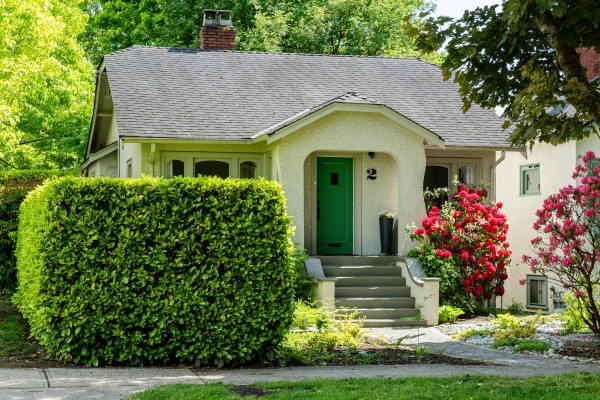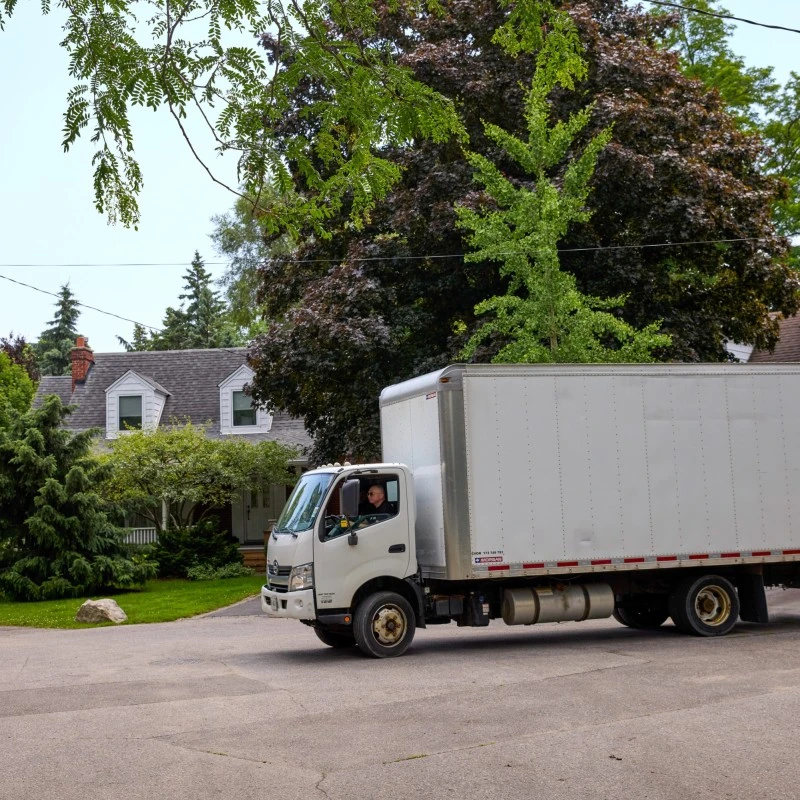Moving checklist and relocation guide in Calgary


Calgary offers a thriving job market, breathtaking natural scenery, and a more affordable housing market than neighbouring cities like Vancouver and Victoria. Alberta’s low tax rates make the cost of living in Calgary even lower. Rental prices are also generally lower than in other major British Columbia and Ontario cities. Best of all, the iconic Banff National Park is also just a short drive away.
If you are planning a move to Calgary, you can make the process much smoother, while reducing your stress, time, and expenses. All it takes is proper preparation. This guide offers practical advice for each stage of your move while taking a closer look at what life in Calgary is like. From budgeting and packing to cleaning and checking off final to-dos on moving day, you'll find all the tools and tips to stay on track and make your transition seamless.
Introduction to ‘moving day’ in Calgary
 Life in Calgary has its hurdles, especially when it comes to urban sprawl. Many residents, especially those in suburban areas, face long commutes. The challenge has become even greater as the public transit system hasn’t fully kept up with this rapidly growing city. To counteract public transit inefficiency, plan your route way ahead of time and allow yourself a lot of extra time to get from A to B.
Life in Calgary has its hurdles, especially when it comes to urban sprawl. Many residents, especially those in suburban areas, face long commutes. The challenge has become even greater as the public transit system hasn’t fully kept up with this rapidly growing city. To counteract public transit inefficiency, plan your route way ahead of time and allow yourself a lot of extra time to get from A to B.
Depending on the season, be ready for unpredictable prairie weather. Conditions can shift quickly, with sudden rain, snow, or strong winds, even in spring and fall. For cooler shoulder seasons and winter, keep an eye on the forecast, dress in layers, and protect your belongings with waterproof covers or tarps. Planning for weather surprises will help you to avoid potential damage to your belongings.
Traffic in Calgary can be challenging, especially during rush hours. Major roads like Deerfoot Trail often get congested, and construction projects can cause additional delays. Planning ahead of time and using traffic apps to check for accidents and road closures can help make your commute smoother.
The good thing about the city’s rapid growth is that there are many moving companies to choose from. Finding the right company for your budget and needs can be overwhelming. Top Move’s booking platform makes this process hassle-free, allowing you to book the best movers suited for your home move with ease.
Tips to ensure a smooth moving day
Smart planning and preparation can make your moving day so much easier. You’ll have enough on your mind without dealing with unexpected surprises or hurdles. Focusing on safety, organisation, and time-saving strategies will help everything run smoothly.
-
Book your moving company early to lock in your ideal date and time.
-
Map out your route in advance, paying attention to major roads, intersections, and transit options. Apps like Google Maps can give live traffic updates and help you avoid delays.
-
Walk through both your current and new home and identify potential obstacles, like tight hallways or tricky staircases. Note them down. Let your movers know ahead of time so they can plan accordingly.
-
Tackle all your administrative tasks before moving day. You’ll need to update your address with utilities and service providers. If you’re moving to a different city or town, check that your records are properly transferred.
-
Make an inventory of all your belongings you’ll be moving. This will help you determine the right truck size to book, keep track of your stuff, and make packing and unpacking much more efficient.
What you need to know about moving to or within Calgary
Housing
 Finding a home in Calgary can be competitive, especially in high-demand areas like Beltline, Kensington, Bridgeland, and Marda Loop. Calgary’s overall housing costs are lower than Vancouver and Toronto's, which has made Calgary increasingly popular over the last decade. Starting your housing search early, setting a clear budget and acting quickly when you find a good option can make all the difference in scoring a great rental or property.
Finding a home in Calgary can be competitive, especially in high-demand areas like Beltline, Kensington, Bridgeland, and Marda Loop. Calgary’s overall housing costs are lower than Vancouver and Toronto's, which has made Calgary increasingly popular over the last decade. Starting your housing search early, setting a clear budget and acting quickly when you find a good option can make all the difference in scoring a great rental or property.
Popular and affordable neighbourhoods in Calgary for renting or buying
-
Bowness
-
Dover
-
Penbrooke Meadows
-
Abbeydale
-
Marlborough
-
Forest Lawn
-
Ogden
-
Pineridge
-
Temple
-
Whitehorn
Transportation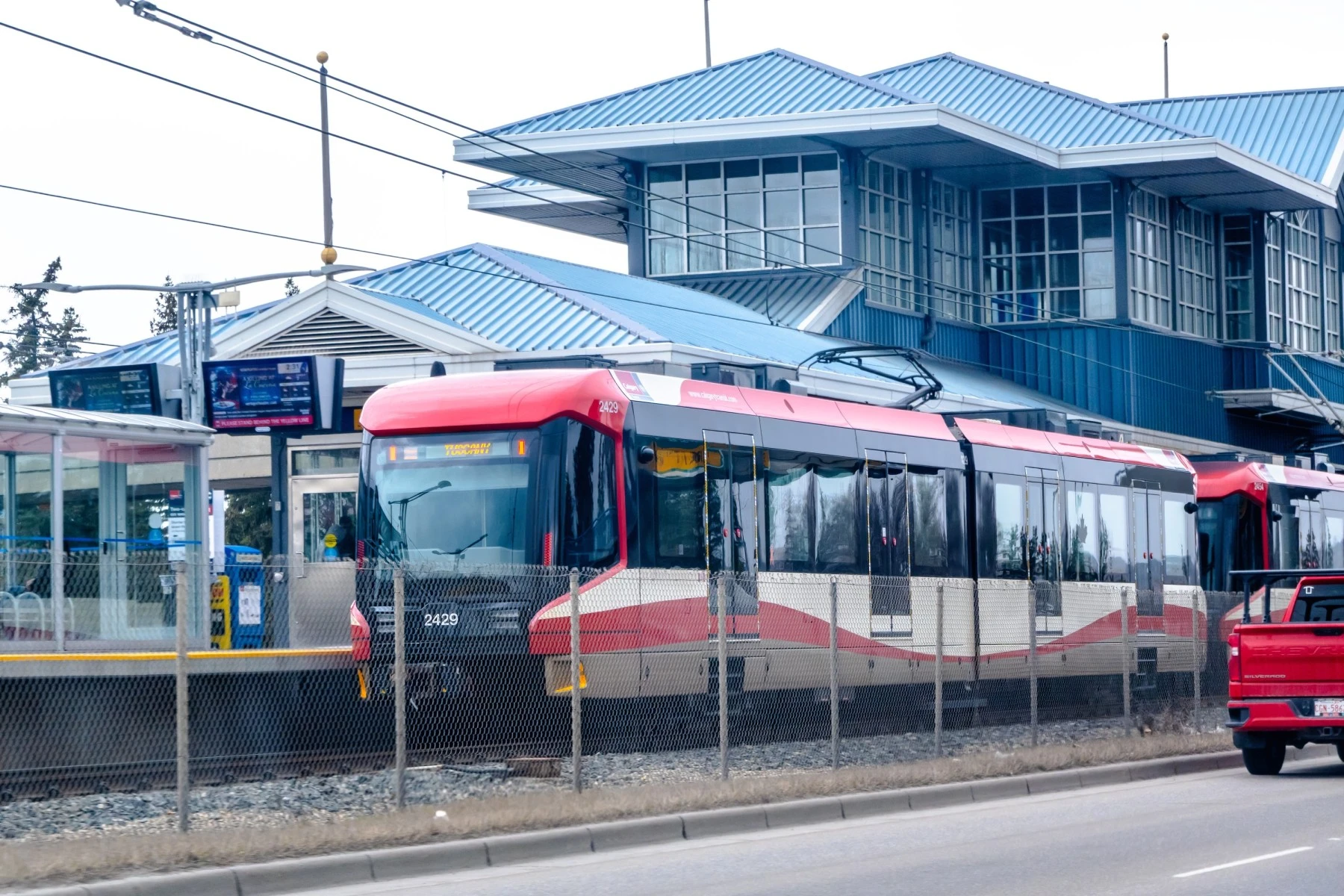
Calgary’s public transit system is operated by Calgary Transit, which includes a network of buses and light rail (CTrain) services. The CTrain has two main lines (Red and Blue) that cover most of the city and run directly through downtown. Park-and-ride commuting is popular with the train. Bus service in outer suburbs can be limited, and waiting times can be longer outside peak hours. Overall, public transit in Calgary is affordable and convenient for those living near major hubs but can be challenging and time-consuming in the outskirts.
Calgary has one of North America’s most extensive urban pathway networks. With over 1,000 kilometres of regional pathways and bike lanes, cycling is popular for commuting and recreation. There are plenty of bike lanes in downtown Calgary, which creates a bike culture based on safety and accessibility. Unfortunately, due to winter weather conditions, cycling is only practical for half the year.
Suburban residents who drive face long commute times. Major roads like Deerfoot Trail, Crowchild Trail, and Glenmore Trail can become heavily congested during rush hours. Despite challenges, Calgary’s road system is a grid making it easier to navigate than Toronto or Vancouver.
Choosing the right moving company
Choosing a moving company is a big decision, so take your time. Do your research, and think about exactly what your priorities are. Reading online reviews can give you insight into past customer experiences, and people tend to be overly honest about service quality.
Compare insurance options between companies to check that you're getting the right coverage, at a fair price. After creating an inventory of your belongings, you’ll have a better idea of the truck size and service to book for your home move. While it might be tempting to go with the cheapest quote, it’s often worth investing in a company known for reliability, professionalism, and positive reviews.
With that being said, if you are still feeling overwhelmed about choosing a moving company, Top Move is equipped to help you book the best help for your unique situation and needs.
Moving house checklist for Calgary
10+ Weeks before your home move
-
Whether you're new to Calgary or already living in the city, take the time to explore the neighbourhoods you're considering.
-
Think about your lifestyle—daily routines, commute, access to parks, shops, and other local amenities.
-
Start creating a moving budget. Include costs like movers, packing materials, utility connections, and fuel. Give yourself a buffer for surprise expenses.
-
Book movers early to secure your ideal date. If you need extra space during the move, look for local storage options to house your belongings.
-
Begin decluttering. Sell, donate, or recycle anything you don't plan to take with you. If you tend to hold on to too much stuff—be ruthless. It will make moving easier in the long run.
-
Make a packing game plan, including what to pack first and what packing supplies you’ll need to get.
-
If you're renting, give proper notice to your landlord—typically 12 months in advance in Canada, depending on your lease.
6+ Weeks before your home move

-
Start gathering packing supplies. Buy high-quality materials or go green by reusing boxes and newspapers. Grocery store produce boxes are sturdy and great for heavier items. Blankets work well as padding for your nice furniture and artwork.
-
Begin packing non-essentials like books, seasonal decor, clothing and gear, or rarely-used kitchen items.
-
Update your address with Canada Post, utility companies, banks, and any subscriptions.
-
Be extra cautious when packing delicate items like electronics, artwork, and family heirlooms.
-
If your new home requires parking permits for a moving truck, arrange them now.
4+ Weeks before your home move

-
Re-confirm moving dates with your moving company for peace of mind.
-
Book a cleaning service if needed. A spotless home ensures that you get your damage deposit back.
-
Make a plan for pets and young children on moving day, so they stay safe and out of the way.
-
Visit your new place to see if any repairs or cleaning should be done before you arrive.
2+ Weeks before your home move
-
Keep packing and organising—don’t leave it to the last minute.
-
Update your address on your driver’s license, car registration, and even voter registration.
1 Week before your home move

-
Share your moving day plan with your movers and get detailed. They will appreciate the clarity.
-
Give your old home a thorough cleaning. Go for near-perfection. It’s better to overdo it than miss out on the damage deposit.
-
Finish packing everything except essentials.
-
Stop watering large houseplants so they’re lighter to move when the time comes.
-
Prep a few freezer-friendly meals to make your first week in the new home easier.
-
Pack a "moving day essentials" bag with items like toiletries, chargers, snacks, water, medications, and important documents.
Moving day

-
Reserve a parking spot for the moving truck if needed.
-
Step back and let the movers do their thing. They are trusted professionals after all.
-
Do a final walkthrough of your old home to check that nothing’s left behind.
-
Once you're moved in, start unpacking.
After moving day
-
Focus on unpacking your essentials first in the kitchen, bathroom, and bedroom. This will create order and comfort from the get-go, so you don’t get frazzled.
-
Check that boxes and furniture are in the right rooms to avoid having to backtrack to find them.
-
Get to know your new neighbourhood. Grab a coffee, walk in a nearby park, and find your local recreation centre, post office, and library.
Budgeting for movers in Calgary
What moving costs do I need to consider?
Moving costs in Calgary can vary depending on how big your home is and how far you're going. To book the best deal and request quotes from a bunch of different moving companies, use the Top Move platform. It’s designed to make this part of the process easier. You can compare all your options and decide on the most affordable and convenient choice to book.
-
Moving to a one-bedroom apartment will cost between CA$500 and CA$900.
-
Moving a four-bedroom house could run anywhere from CA$1,800 to CA$3,000.
-
If you have bulky or special items, like pianos or large workout equipment, you’ll have additional fees to add to your total moving costs.
What extra costs do I need to consider when buying a home?
If you’re buying a home, plan for extra costs beyond the purchase price which all add up—things like:
- Legal and conveyancing fees
- Inspections
- Property taxes
- Insurance
What costs should budget for as a renter?
-
Damage deposit—usually one month’s rent.
-
Fees associated with moving admin, like setting up utilities.
-
Buying packing supplies.
-
Hiring cleaners if needed.
-
Paying for parking permits.
Pros and cons of hiring Movers or DIY
 Now it’s time to decide whether to move yourself or hire professionals to lighten the load. The right choice depends on your budget, schedule, physical ability, and how complex your move is. Also, do you have family members to help? Here’s a look at the logistics of each option.
Now it’s time to decide whether to move yourself or hire professionals to lighten the load. The right choice depends on your budget, schedule, physical ability, and how complex your move is. Also, do you have family members to help? Here’s a look at the logistics of each option.
Hiring professional movers
The Pros
-
Fast and efficient: Experienced movers can pack and load quickly, saving time and energy.
-
Less stress: Movers handle hauling heavy furniture or wrapping up fragile items.
-
Added security: Many companies offer insurance, giving you peace of mind if your belongings get damaged.
-
Expert handling: Movers know how to protect delicate or valuable items, like electronics, artwork, antiques, etc.
-
Reduced risk: Letting the pros handle the heavy lifting can help prevent injuries and property damage.
Details to consider when hiring movers
-
Cost: Hiring a moving crew costs money, and DIY is free. But remember that with DIY, you risk paying in other ways, such as back pain or damaged items.
-
Extra fees: You might get charged more for things like long carry distances, stairs, or tight entryways.
Is DIY the way to go?
The Pros
-
Saves money: Great for tight budgets, especially if you don’t have many items to move.
-
Full control: You get to organise, pack, and transport everything your way.
-
Flexible timing: You can move on your own schedule, without being tied to a company’s availability and hours of operation.
-
Family members can help: If you have older children or teenagers, they can help make it go faster. Many hands make light work.
-
Friends + pizza = free help: Rally your friends for a moving day party.
The Tradeoffs
-
Takes longer: Packing and moving can take up more time than expected.
-
Physically demanding: Moving large or awkward items can lead to injury or just plain exhaustion.
-
More risk: Without proper techniques or tools, your stuff (and your body) is more vulnerable to damage.
-
Weather factors: Calgary’s unpredictable weather during shoulder seasons and the winter can make DIY moves more challenging.
Room-by-room packing tips to help stay organised
Packing can feel overwhelming, but a little strategy can help make it much more manageable. Start early, work through one room at a time, and label every box—you can’t overdo labelling. The more organised you are, the smoother your unpacking will be. The less you bring, the better. Declutter ruthlessly—you likely won’t miss half the stuff you get rid of.
Outdoor spaces (yard, shed, and storage areas)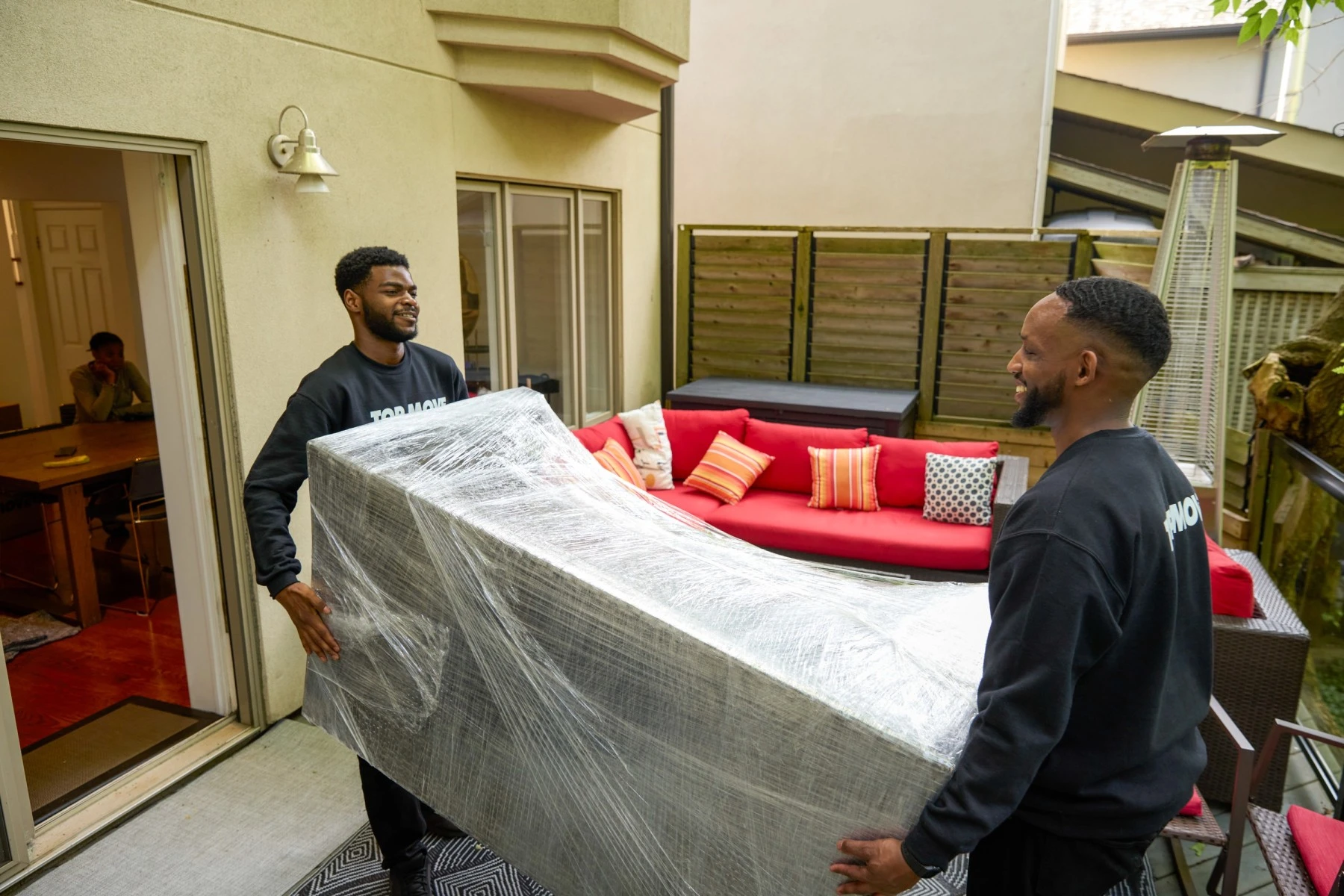
Aim to pack up these areas before winter hits, so you don’t have to freeze and work around limited daylight.
-
Tools: Sort and downsize. Donate extras or check if your local landfill has a reuse zone. Pack hand tools in sturdy boxes and wrap large or sharp items like weed wackers, chainsaws and trimmers in old blankets.
-
Furniture: Take apart anything bulky and wrap it with plastic wrapping or blankets for a more sustainable option. Keep screws and small parts in labelled bags taped to the piece.
-
Plants and pots: Move big potted plants separately. Pack smaller plants carefully in boxes with padding. Avoid watering your large plants the week before the move, so they're lighter to move.
Guest bedroom
-
Bedding: Use large bins or bags and label everything clearly.
-
Furniture: Disassemble what you can. Store hardware in a labelled bag taped to the item or stored in one place.
Home office
-
Paperwork: Shred what you don’t need. Pack important documents in a labelled file box and keep the documents you may need in your essentials bag.
-
Electronics: To protect your computers, TV and other electronic items, wrap them in towels or fabric. Use original boxes if you still have them. These are great low-waste packaging options compared to plastic wrap.
-
Furniture: Break down desks when possible. Pack lamps carefully in sturdy boxes and store small items like pens and cords in labelled containers.
Living room and dining room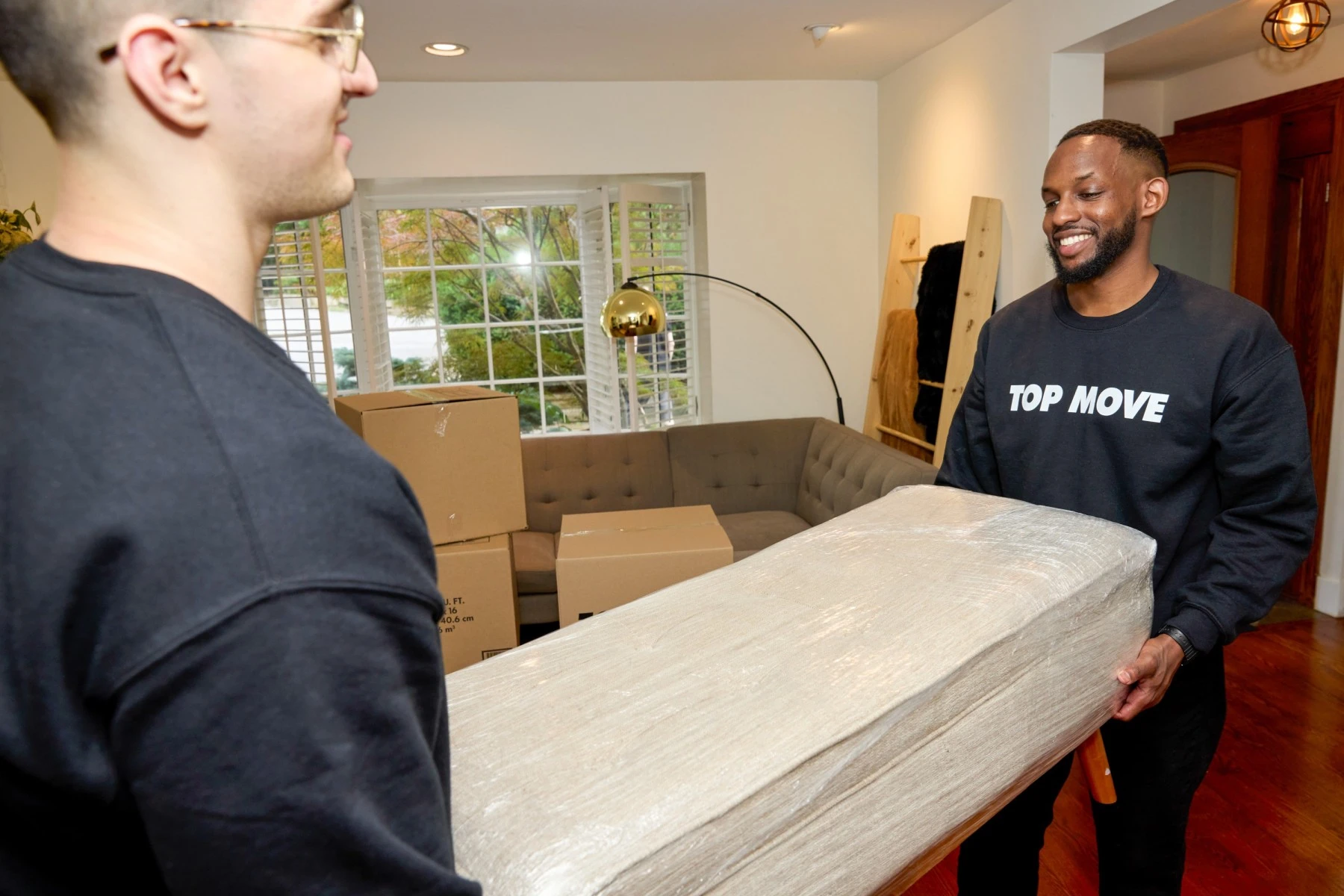
-
Electronics: TVs and speakers are safest in their original packaging. Otherwise, blankets or thick towels work well.
-
Furniture: Use furniture pads or moving blankets to protect surfaces. Disassemble tables or shelves to save space.
-
Books and decor: Pack books in small boxes or wheeled luggage to keep the weight manageable. Wrap decorative items carefully.
-
Soft furnishings: Load cushions, rugs, and blankets into large bags or boxes. Avoid overstuffing as this may damage items.
Primary bedroom
-
Clothing: Hang garments in wardrobe boxes and fold the rest into suitcases or bins.
-
Bedding: Label boxes with pillows, comforters, and sheets so you can set up your bed on day one.
-
Furniture: Take apart beds or dressers and store hardware in labelled bags.
-
Personal Items: Box up books, small tech, and bedside items. Valuables like jewellery should go in your essentials bag. Wrap framed pictures in soft fabric for protection.
Bathroom
Declutter: Toss expired medications and old products. Consider donating unused toiletries to a local shelter.
Toiletries: Keep liquids in sealed or zippered bags to avoid leaks. Group everything in one box for easy access.
Breakables: Wrap glass items and mirrors in towels or thick fabric and pack them securely.
Kitchen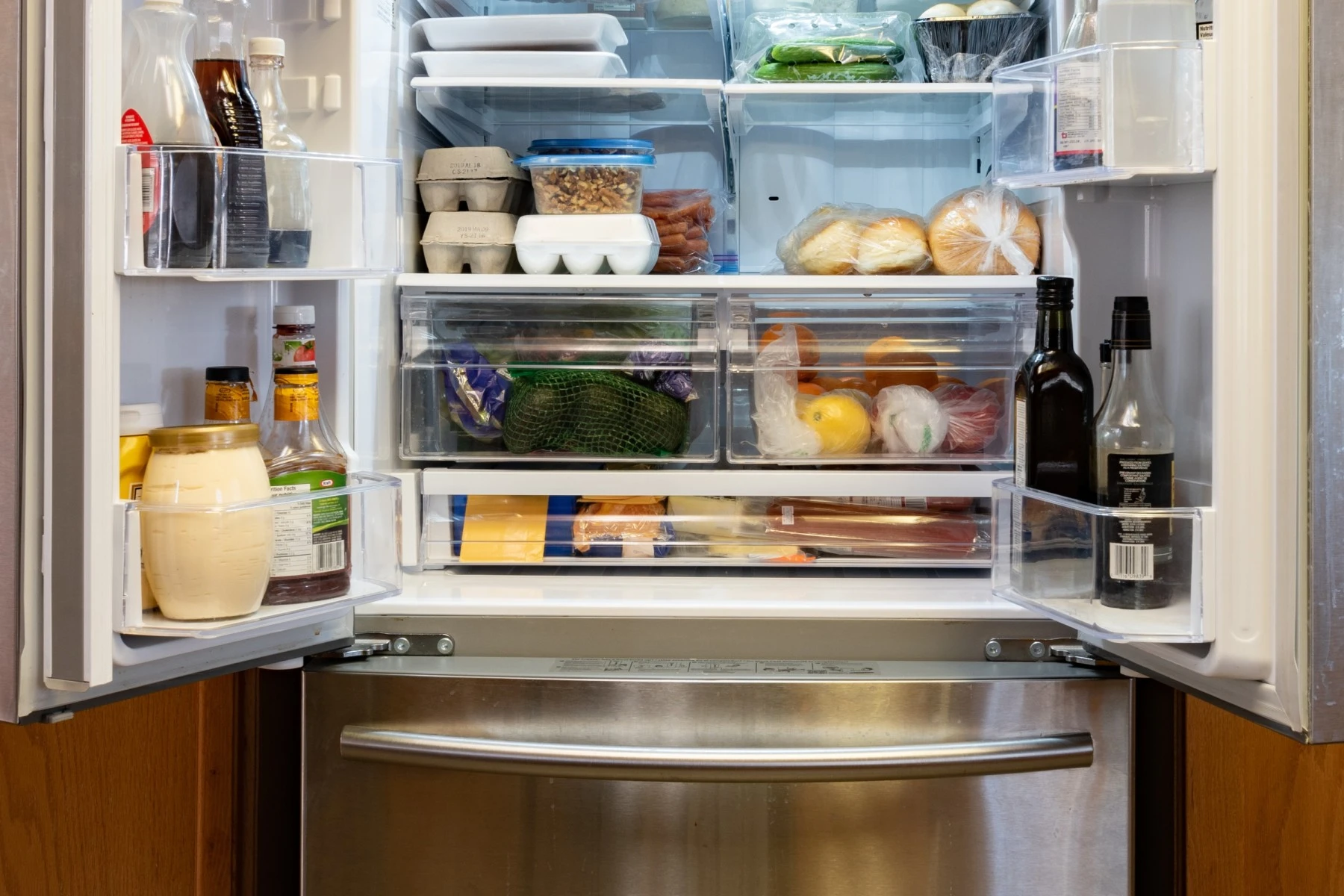
-
Declutter: Compost expired goods and take a trip to a soup kitchen to donate unopened food you won’t use. Use containers you already have to store small kitchen items.
-
Dishes and glassware: Wrap each piece individually with fabric or paper. Stack with cardboard padding in between if needed. Use dividers for stemware.
-
Food: Eat all of your perishables before the move—preparing meals ahead of time will make the moving week easier. Pack shelf-stable items in small boxes.
-
Appliances and tools: Wrap appliances in towels and pack them snugly. Group cutlery and utensils together in labelled boxes or containers.
Decluttering tips
When you are downsizing and decluttering, there are a few helpful ways to get rid of stuff:
-
Leave it on the curb (a popular method).
-
Sell anything of value on online marketplaces.
-
Donate to thrift stores.
-
Donate to outreach centres.
Cleaning tips to get your full damage deposit back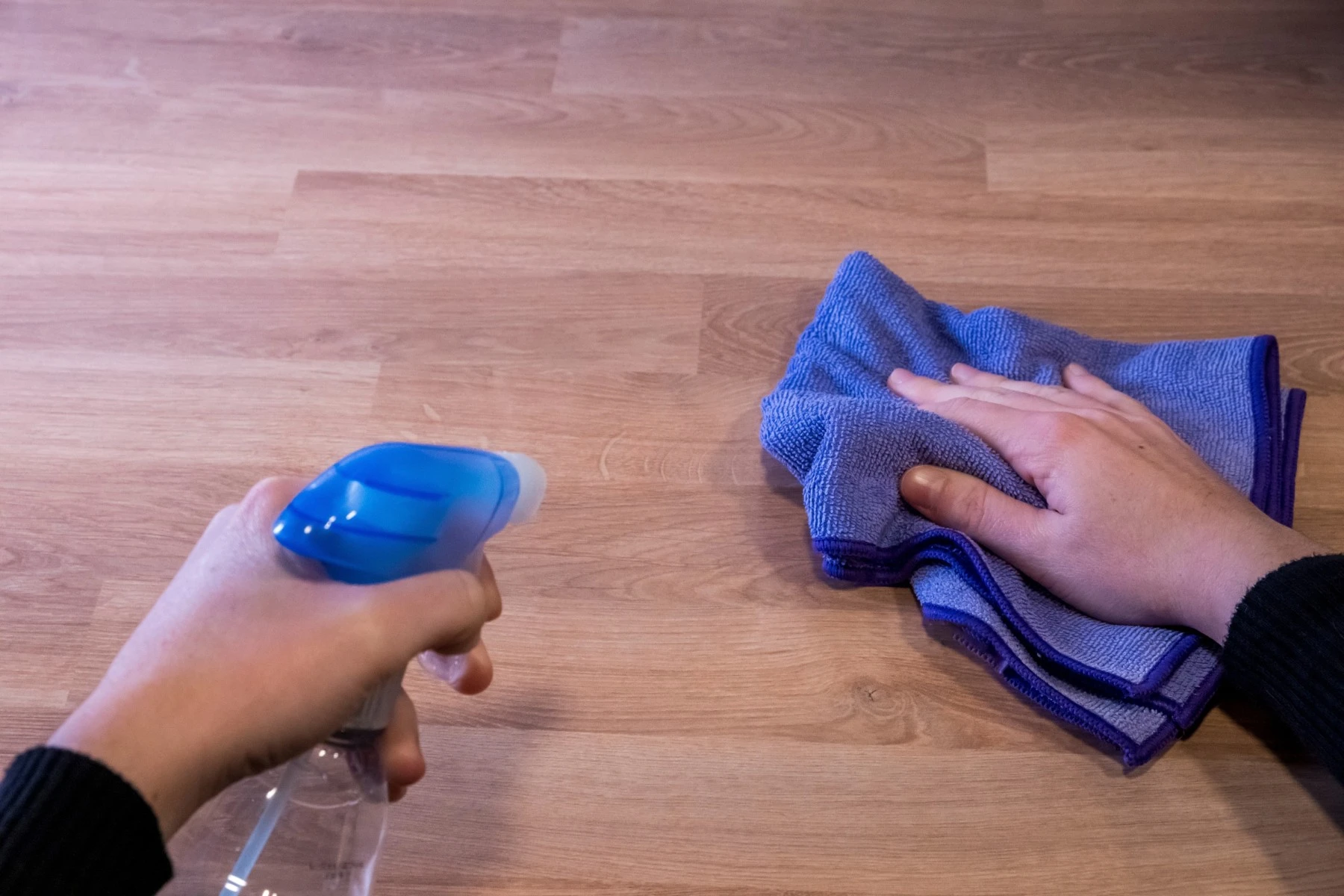
Now that all your belongings are packed up, you'll want to give your old home a good clean. This is especially important if you're renting to get your full damage deposit back, which is usually the equivalent of a month’s rent. You can hire a professional cleaning service to do the job for you, or you can opt to tackle this task yourself. Here are some tips to help your cleaning a breeze.
Start from the top, make it shine to the bottom
- Start by dusting ceilings, light fixtures, and vents before moving down to walls, windows, and frames.
- Clean windows with soapy water first, followed by a light mist of vinegar and water for a streak-free finish.
- Wash the walls with warm water and natural soap, like castile soap.
Give your kitchen the five-star treatment
- Wash all surfaces, including countertops, sinks, and appliances.
- For stubborn grease, a baking soda and vinegar paste works wonders.
- Look out for the hidden grime traps, like behind the fridge and under the stove.
- Check under the sink for mould. If you spot any, scrub with commercial dish soap, then spray with vinegar or hydrogen peroxide.
- Be sure to dry everything thoroughly, using a space heater if necessary.
Scrub your bathroom like a pro
- Start by scrubbing your tile and grout, using a vinegar and baking soda mix, and an old toothbrush for the detailing.
- Wash down mirrors, sinks, and countertops, giving extra attention to the toilet and shower.
- Polish fixtures for a final touch.
- Run the bathroom fan to keep moisture at bay.
Take the trash out
- Make sure you’ve dealt with every last bit of garbage before you get going with your cleaning. You don’t want to walk through a freshly mopped space to take out the trash.
- Recycle whatever you can.
Give your floors the love they deserve
- Vacuum thoroughly, including corners and high-traffic areas.
- Mop hard floors with hot soapy water and rinse for a perfect finish.
Revive your carpets
- If carpets have discolouration, stains or odours, consider renting a steam cleaner or hiring professionals, especially for larger spaces.
One last sweep before you leave
- Once everything is clean and dry, remove your shoes and inspect the space to check that nothing was missed.
- Since landlords can be picky, snapping photos of your cleaned space can serve as proof of cleanliness and help you get your full deposit back.
How much does storage cost in Calgary?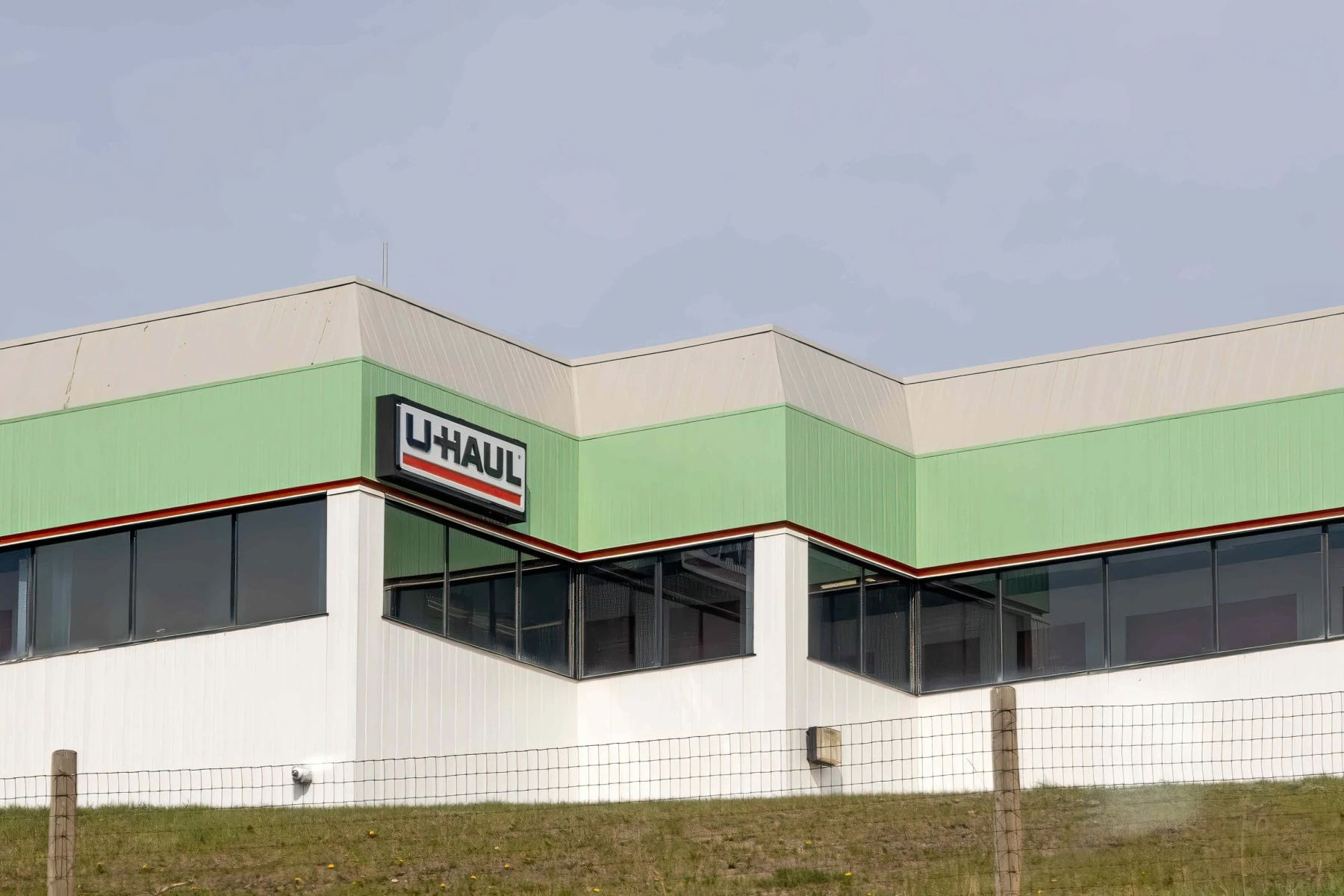
Reasons you may need a storage unit
-
Downsizing to a smaller home.
-
Waiting for renovations to be finished.
-
Holding onto sentimental or valuable belongings you don’t have space for yet.
-
Storage offers convenience and flexibility because you can choose a unit size and rental term that fits your situation.
Calgary storage unit costs
In Calgary, prices depend on the size of the unit, location, features like climate control, and how long you rent it. Usually, the longer you rent, the lower the monthly cost. Here’s what to expect in terms of cost:
-
Medium-sized units: Units range from around CA$150 to CA$170 per month.
-
Large units: Starting at CA $240+ per month, with higher rates for extras like 24/7 access or climate control, etc.
-
Mobile storage: Prices vary depending on container size, length of rental, and transportation fees.
-
Insurance: Costs vary based on your provider and the level of protection you need.
Alternative storage options in Calgary
If you need flexibility, mobile storage could be a good option. A storage company simply drops off a container at your home, you fill it at your own pace, and they pick it up for storage at their facility. It can be cost-effective, but make sure you have space in your yard to keep the container while loading.
Another solution is buying or renting a shipping container for on-site storage. This is especially ideal if you're doing long-term renovations or need easy access to tools or supplies.
Don’t skip insurance
Many Calgary storage providers include basic coverage. However, if you’re storing valuables like antiques, electronics, or collectables, it’s worth upgrading your insurance. For irreplaceable or high-value (smaller) items, consider using a safety deposit box at your bank.
Unique moving situations with pets, children and seniors
 If you're relocating with pets, children, or elderly family members, a bit of extra planning can make the transition smoother and less stressful for everyone.
If you're relocating with pets, children, or elderly family members, a bit of extra planning can make the transition smoother and less stressful for everyone.
Moving with pets
Moving can be confusing for animals. They sense the disruption and may worry they’re being left behind. They also like to get in the way often to remind you not to forget them. To ease their anxiety, keep their essentials close and create a familiar environment during the move. Pack a pet kit that includes:
-
Food and water for the day.
-
Their favourite blanket or bed.
-
Their crate or carrier.
-
Toys that smell like home.
-
Any necessary medications and vet records.
-
Treats for comfort.
If you're travelling a long distance or have multiple pets, it might be worth using a professional pet transport service to keep them safe and make things less stressful for you.
Moving with children
Children can feel both excitement and uncertainty when it comes to moving, no matter how cool their new room is, or how close their new home is to the playground. Leaving behind friends and familiar surroundings can be tough, even if they’re curious about their new home.
Here’s how you can help your child adapt to move
-
Let them decorate or label their own moving boxes. It gives them a sense of control and purpose.
-
Pack a “comfort bag” with favourite toys, books, or games to keep them entertained.
-
Turn chores into games; cleaning or organizing can be more fun with small rewards.
-
Explore your new neighbourhood together. A trip to a local playground, toy store, or library can create positive associations.
Moving with Seniors
If you’re moving with an older adult, especially someone with mobility or health needs, planning ahead of time is essential. Create a quiet space for rest during the move and pack them in a personal bag with:
-
Medications and medical supplies.
-
Water and snacks for the day.
-
Important documents.
-
Glasses or hearing aids.
-
Comfortable clothing.
Check that the new home is senior-friendly. Accessibility features to look for include:
-
Step-free entrances and ramps.
-
Wide doorways and hallways.
-
Grab bars in bathrooms.
-
Non-slip floors.
-
Lowered countertops.
-
Elevators or chair lifts if needed.
If any home modifications are required, schedule them long before move-in day. Also, don’t forget to locate nearby clinics, pharmacies, or hospitals in case of emergencies.
Finding the right moving company in Calgary
 Whether you're relocating across Calgary or moving into the city for the first time, finding a trustworthy moving company can feel like a big task, especially when there are so many options to choose from. Fortunately, you don’t have to navigate it alone. Top Move allows you to effortlessly book reliable, professional movers in Calgary—helping you compare quotes, save money, and feel confident that your move will be handled with care from beginning to end.
Whether you're relocating across Calgary or moving into the city for the first time, finding a trustworthy moving company can feel like a big task, especially when there are so many options to choose from. Fortunately, you don’t have to navigate it alone. Top Move allows you to effortlessly book reliable, professional movers in Calgary—helping you compare quotes, save money, and feel confident that your move will be handled with care from beginning to end.
What do our customers say?









![How much do you need to earn to live comfortably in Calgary? [2025] How much do you need to earn to live comfortably in Calgary? [2025]](https://cdn.topmove.ca/image/blog/46fef724030602a02f51110ffb3ac569.jpeg)
![How much do you need to earn to live comfortably in Calgary? [2025] How much do you need to earn to live comfortably in Calgary? [2025]](https://cdn.topmove.ca/image/blog/7313ed3910b86a41b1ec8af28957e4a8.jpeg)
![The Cost of Living in Calgary [2025] The Cost of Living in Calgary [2025]](https://cdn.topmove.ca/image/blog/44a5bcb6ebf6c658f5c5fe30ab7077c9.jpeg)






